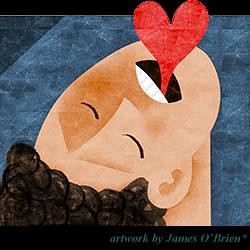Coming away from Edinburgh I wanted to find out some more, especially the story of the Passenger Pigeon, which though I'd heard its name before I knew nothing of its plight. Maybe its story is told in some schools, but not in mine in the UK; anyway here's some of what I found out...
Passenger Pigeons were once the most common bird in North America, probably outnumbering all the other birds in the world, their numbers were estimated to be up to 5 billion birds (yes, thats 5 billion) flying in the skies in enormous flocks.
They were quite an impressive looking bird, larger than you might think, about the size of a large dove, males with a bright red chest plumage.
Flocks could number many, many, millions of birds, flying together up to 1 mile deep, 5 miles wide and 100's of miles long... so vast were the numbers said to be that that they took several days to fly overhead, reportedly making the skies turn dark...
So, if they were so numerous how did they become extinct?
Enter mankind... and unchecked hunting.
Unregulated hunting seems to be largely responsible for the death of the Passenger Pigeon, and removal of their roosts for breeding too. Because they were so common they were also very easy to hunt, for food or feathers, hunters used nets, guns, poles, and smoke to suffocate nesting birds (100's of birds nested in each tree were an easy target) plus many other methods.
In the 1850's it was becoming apparent that the numbers of birds were reducing but nothing was done to outlaw their hunting... 'because they are so common they need no protection'.
They were seen as a cheap food for growing cities, whole trainloads of many thousands of birds being shipped daily to New York, Michigan and other cities. One operation in New York is said to have harvested 18,000 birds each day throughout 1855.
Indiscriminate hunting and loss of seed trees eventually took it's course, setting the birds into an extinction vortex, and by the 1890's adverts were being placed asking for sightings of wild passenger pigeons.
The last passenger pigeon, Martha, lived alone in the Cincinnati Zoo, for a while the zoo had been offering $1000 to anyone able to supply a male passenger pigeon for mating with Martha, unfortunately the reward was never claimed.
In 1914 Martha died, the last of her entire species.
................................................
"Men still live who, in their youth remember pigeons; trees still live that, in their youth, were shaken by a living wind. But a few decades hence only the oldest oaks will remember, and at long last only the hills will know."
"We grieve because no living man will ever see again the onrush of victorius birds, sweeping a path for spring across the March skies, chasing the defeated winter from all of the woods and prairies."
"There will always be pigeons in books and in museums but they are dead to all hardships and to all delights. They cannot dive out of a cloud, nor clap their wings in thunderous applause. They know no urge of seasons; they feel no kiss of sun, no lash of wind and weather, they live forever by not living at all."
from A Monument to the Pigeon.
Aldo Leopold, 1947.




No comments:
Post a Comment